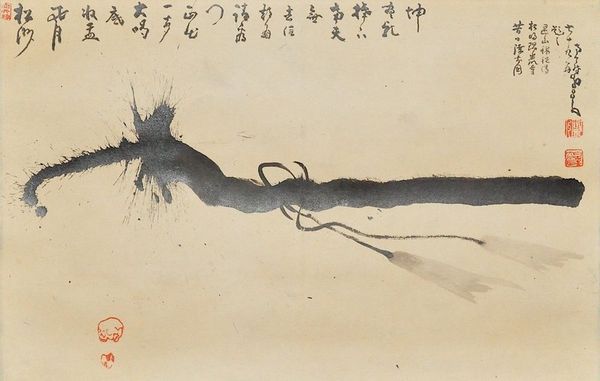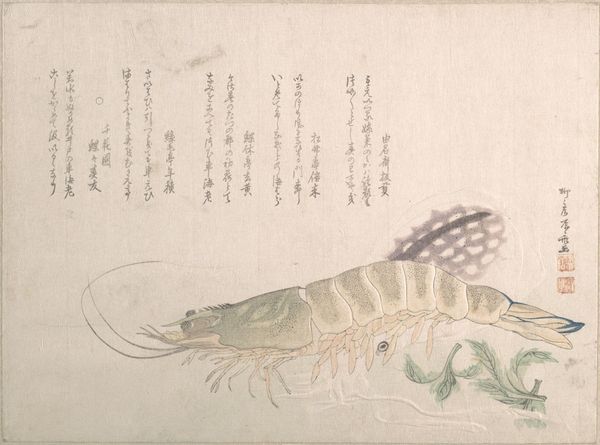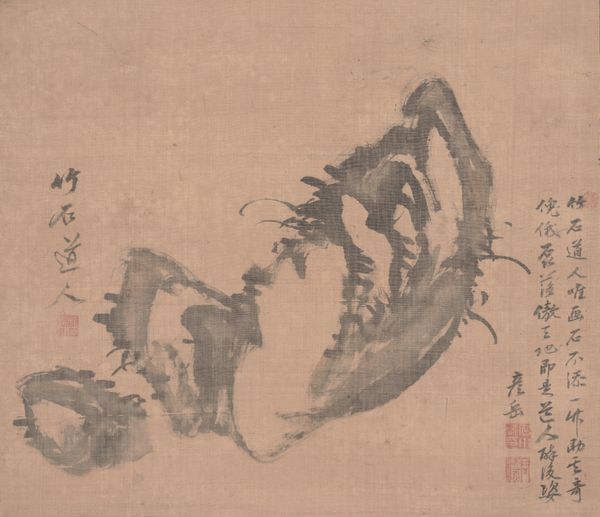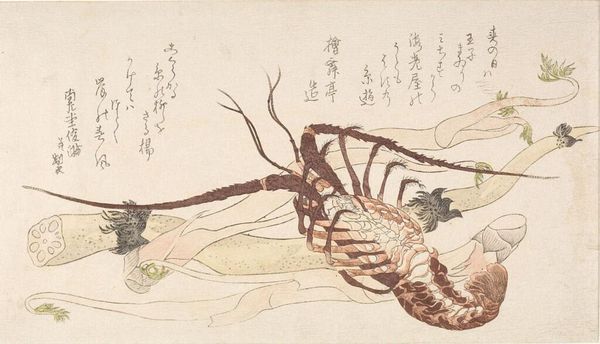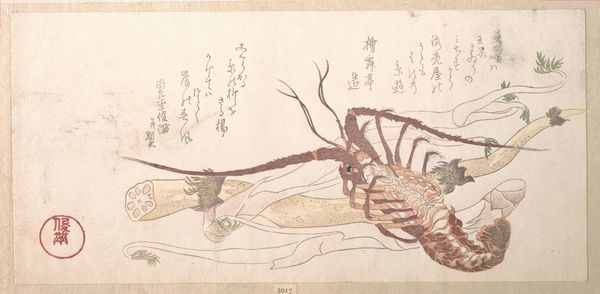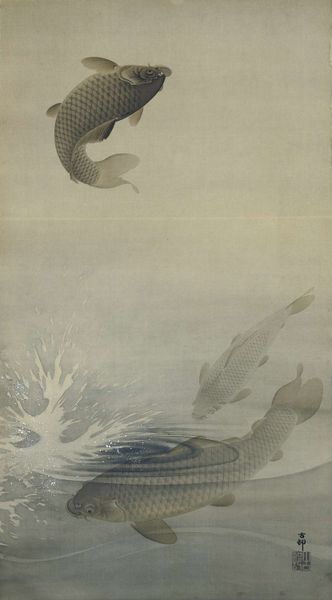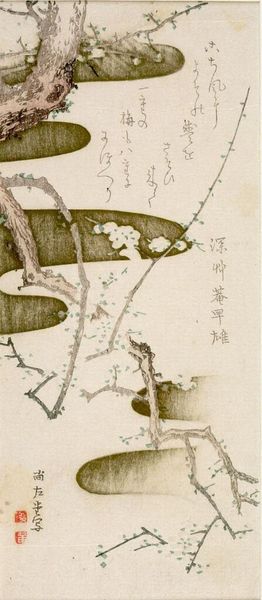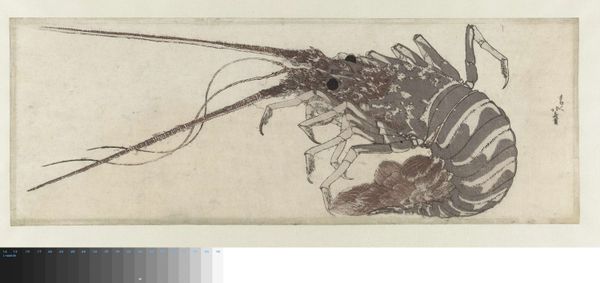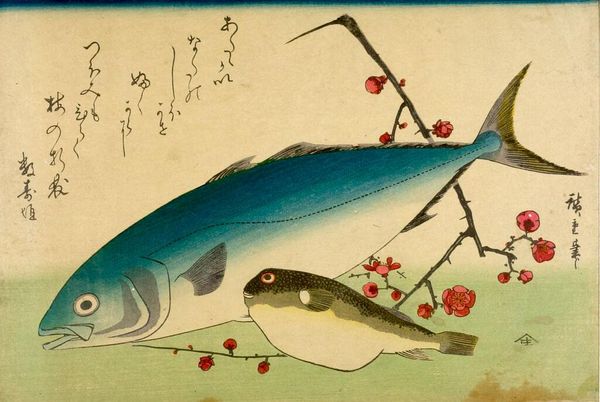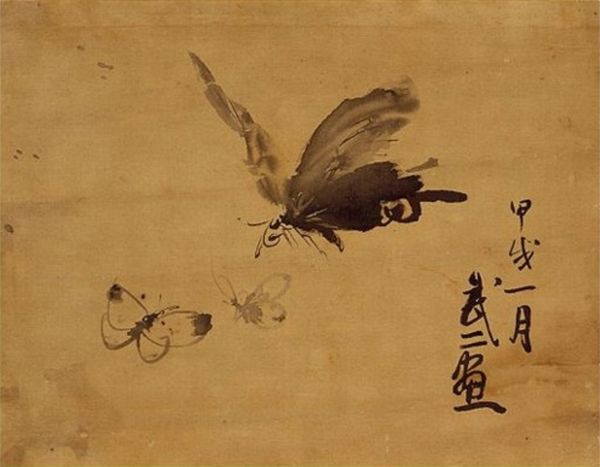
painting, paper, ink
#
painting
#
asian-art
#
ukiyo-e
#
paper
#
form
#
ink
#
line
#
calligraphy
Copyright: Public domain
Editor: So, this is a collaborative piece called “Chimaki,” with the painting by Matsumura Goshun and the calligraphy by Yosa Buson. It's done in ink on paper. It feels quite sparse and Zen-like, but also kind of… unfinished? What do you make of it? Curator: The ‘unfinished’ aspect is, in fact, a critical part of its power. It reflects *wabi-sabi*, a Japanese aesthetic that values imperfection and impermanence. The chimaki itself – the rice cake wrapped in leaves – is a potent symbol of Children’s Day in Japan, a day celebrating youth and vitality. Do you notice how the tied leaves resemble protective hands? Editor: Oh, I see it now! Like it's swaddled. Is that what the calligraphy refers to as well? Curator: Partially. Buson's calligraphy is not just text, it’s visual poetry. The *chimaki*, aside from its association with children, represents aspirations and dreams. Buson’s script, placed as it is, invokes blessings, not just for children but, symbolically, for all new beginnings and hopes. The dynamism in the strokes -- rapid yet controlled -- mirrors the burgeoning energy of springtime, of new growth, don't you think? Editor: Absolutely! And the simplicity of the drawing… it amplifies that feeling. Were Goshun and Buson intentionally working together on the symbolic representation here? Curator: I believe so. Their collaboration emphasizes cultural memory and the recurring cycles of life, visualized through these potent symbols. How do you feel the composition affects your understanding of this message? Editor: Well, it's definitely not overcrowded. The negative space almost emphasizes the preciousness and fragility of those dreams. I'm definitely seeing it in a new light now. Curator: Indeed. The empty space is pregnant with potential, reflecting the open-ended nature of those aspirations, encouraging us to actively participate in interpreting its cultural resonance. Editor: Thanks, I see so many layers now that I missed at first glance. Curator: As do I, with each encounter, rediscovering echoes from cultural memory that resonate even now.
Comments
No comments
Be the first to comment and join the conversation on the ultimate creative platform.
